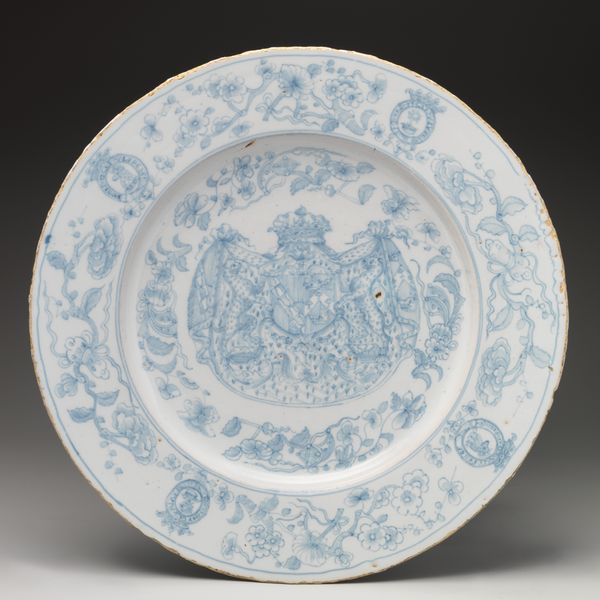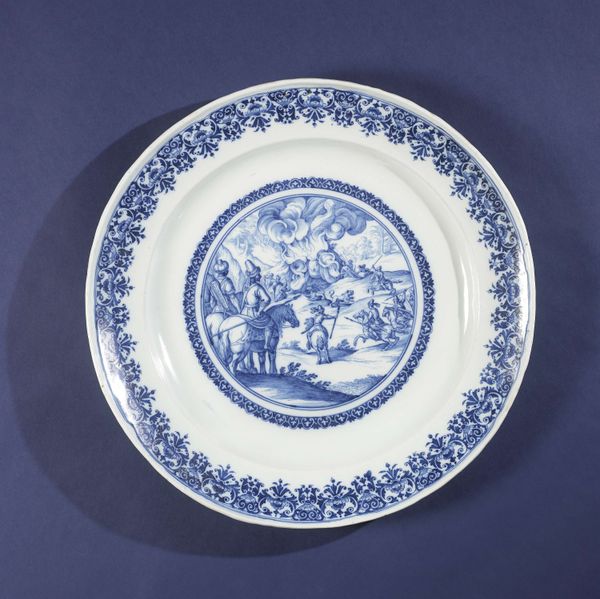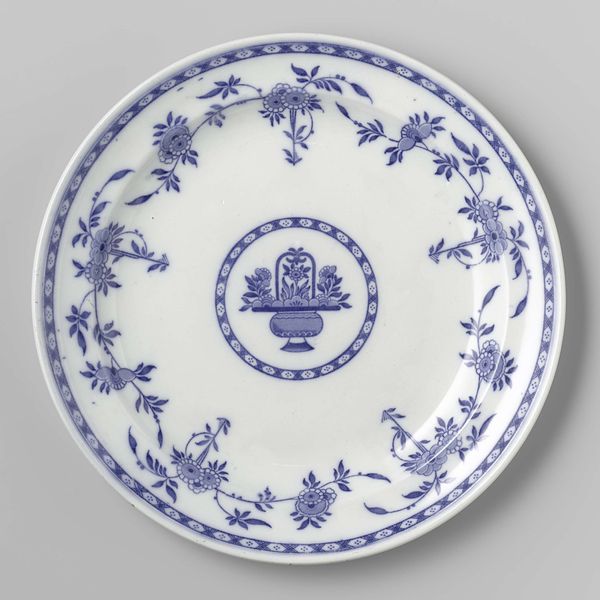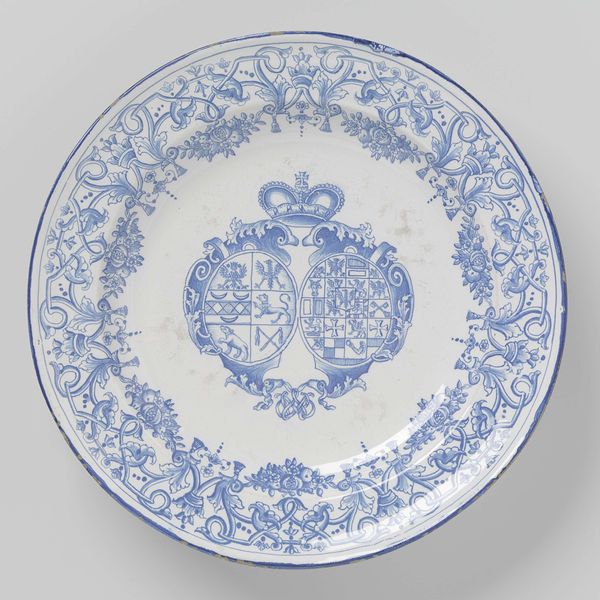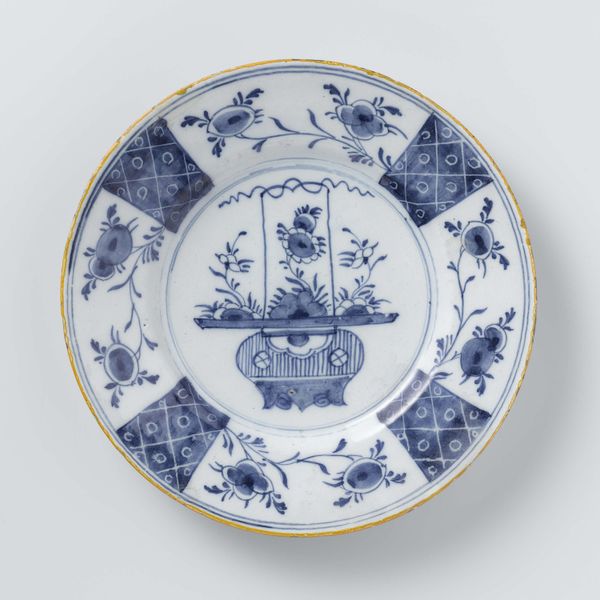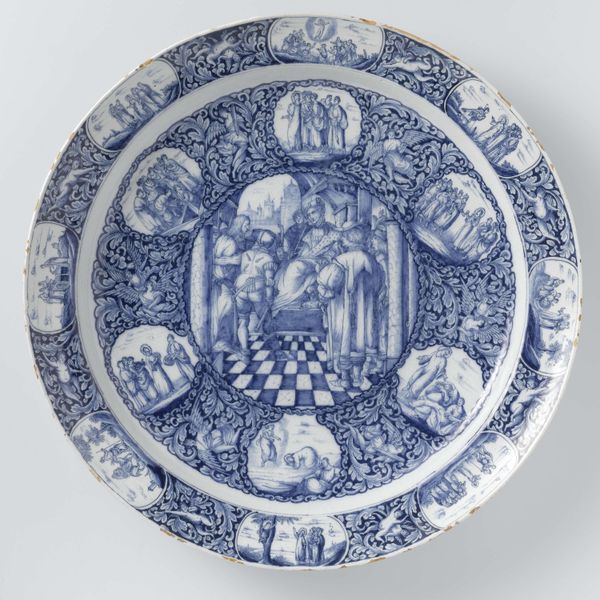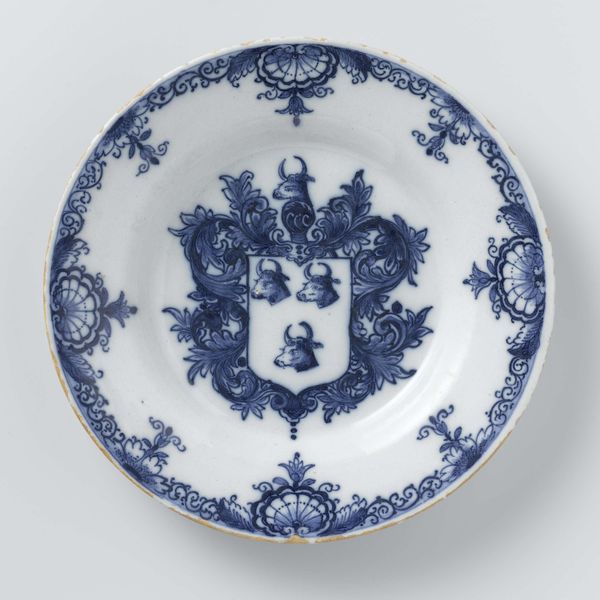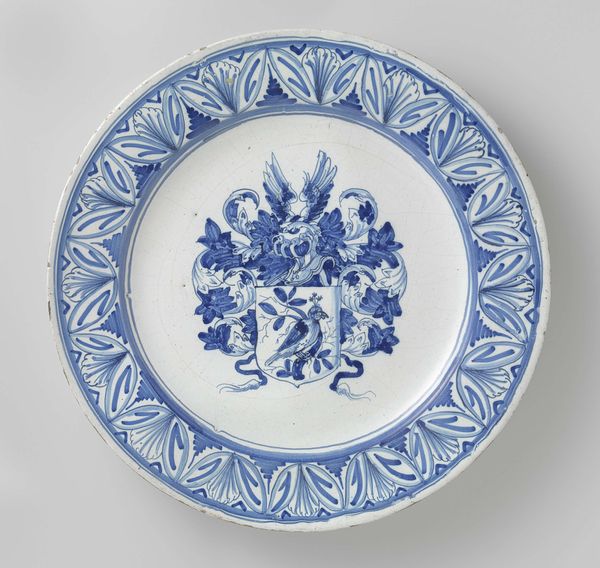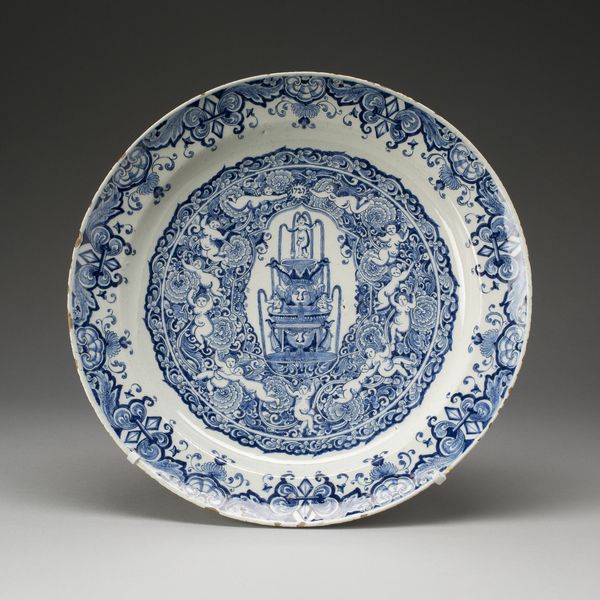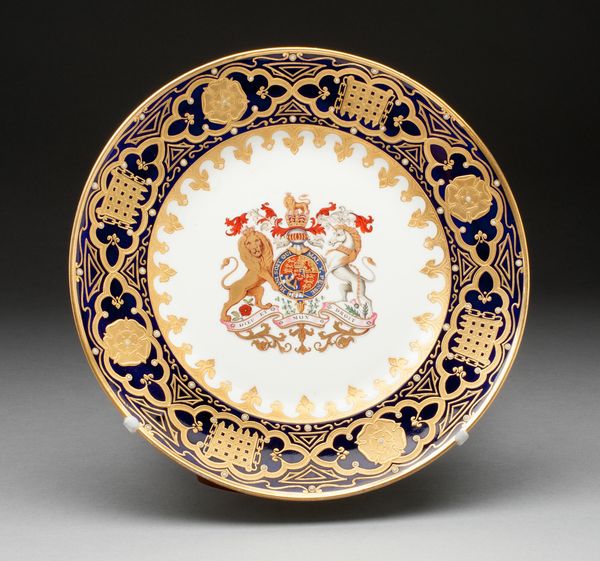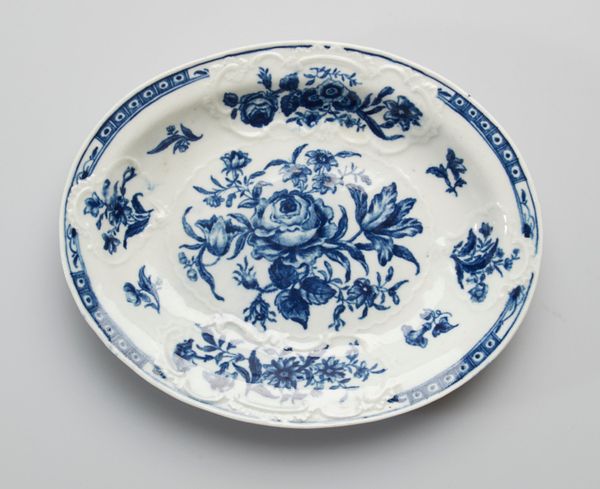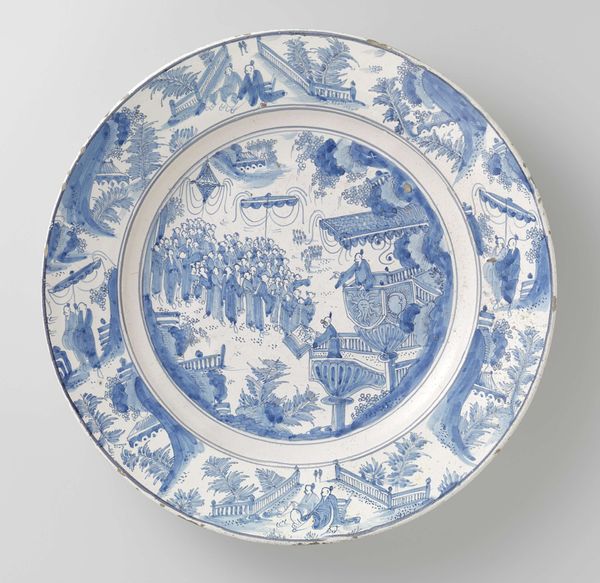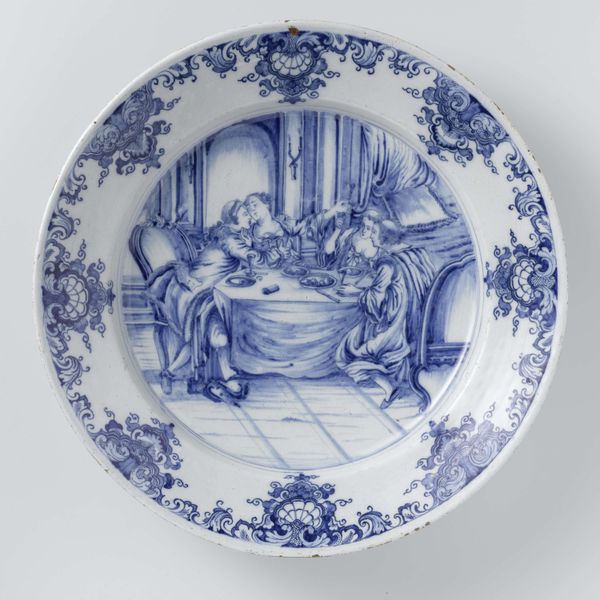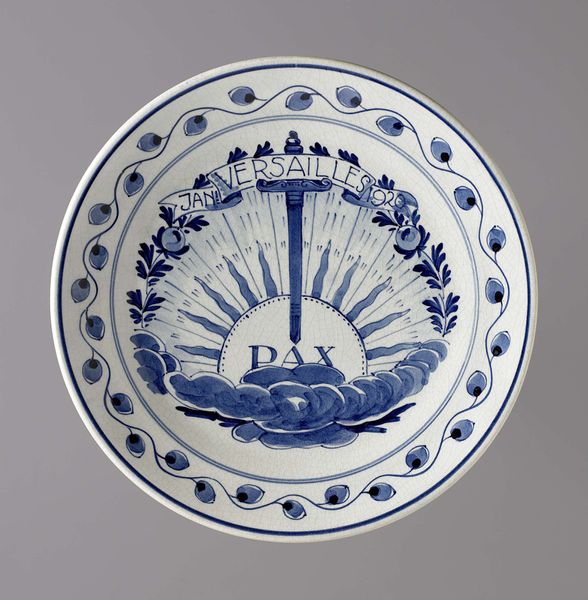
ceramic, earthenware
#
dutch-golden-age
#
ceramic
#
indigenism
#
earthenware
#
stoneware
#
ceramic
#
decorative-art
Dimensions: diameter 36 cm, height 4.3 cm
Copyright: Rijks Museum: Open Domain
Curator: Welcome to the Rijksmuseum. Here we have an earthenware plate created in 1949 by De Porceleijne Fles, titled "Wilhelmina, koningin der Nederlanden - 's Lands welzijn," or “The Welfare of the Land." Editor: It has an oddly charming and melancholic feel with all of that delftware blue against the white glaze. It looks surprisingly delicate, though it's crafted from ceramic, a decidedly durable material. Curator: Precisely. Consider that Delftware production involved meticulous labour, from mixing and preparing the clay, shaping it, and firing in kilns by factory artisans. This wasn't about individual expression but about creating a commodity. The plate commemorates Queen Wilhelmina's jubilee and her dedication to the 'well-being of the nation', but think about it: the same workers could be creating plates with entirely different iconography depending on consumer demand or the prevailing political climate. Editor: Looking at the design itself, I notice a structured layering effect, with central emblems that seem to emerge from the decorative background, all organized by floral elements into neat circular layers. Curator: It really showcases how propaganda intertwines with everyday objects and craft. It blurs lines of “art” since it carries inherent social and historical weight. The symbols – the royal crown, the tree motif with dates on a ribbon, surrounded by ornate decoration, and the queen's monogram, they reinforce authority through this common household item, creating national unity via visual cues. Editor: But is it that subversive, though? Visually, it recalls the long, rich history of decorative arts which reference power via symbols such as crowns. What interests me most is the tension between a flat visual language and the concave form—how effectively symbols convey that central theme when viewed at an angle or when arranged with similar plates. Curator: True, but such a commonplace plate could sit among others with totally dissimilar subject matter! You also should note how “traditional” this looks although being made just after WW2. Editor: From my point of view, these observations actually accentuate what can be a universal quality in art objects. The clean cobalt glaze against stark whiteness presents this emblem to any domestic interior, irrespective of one’s social outlook or how it engages within that broader context of use you are indicating. Curator: A perspective that highlights form and artistic experience is a fair assessment! Still, for me, I keep in mind production of art as being inseparable from any work’s socio-historical placement, for a full picture. Editor: And that’s why examining works like this stimulates such enriching dialogue between distinct approaches, so that both our perspectives grow.
Comments
No comments
Be the first to comment and join the conversation on the ultimate creative platform.
